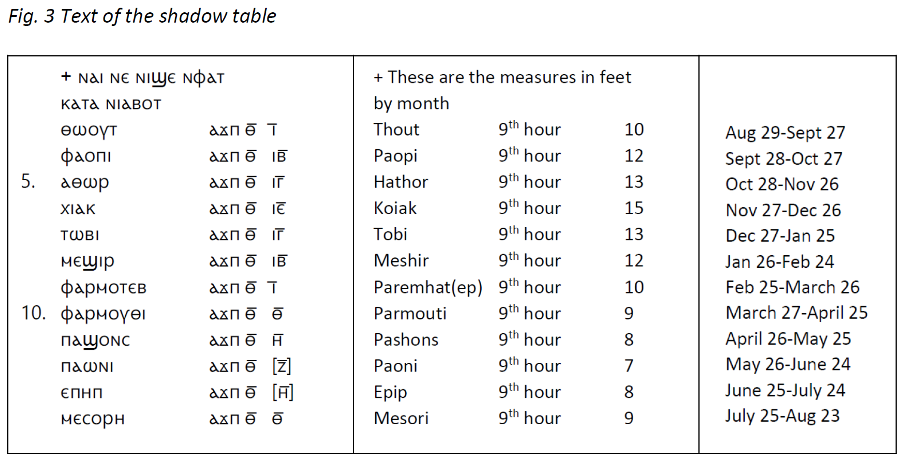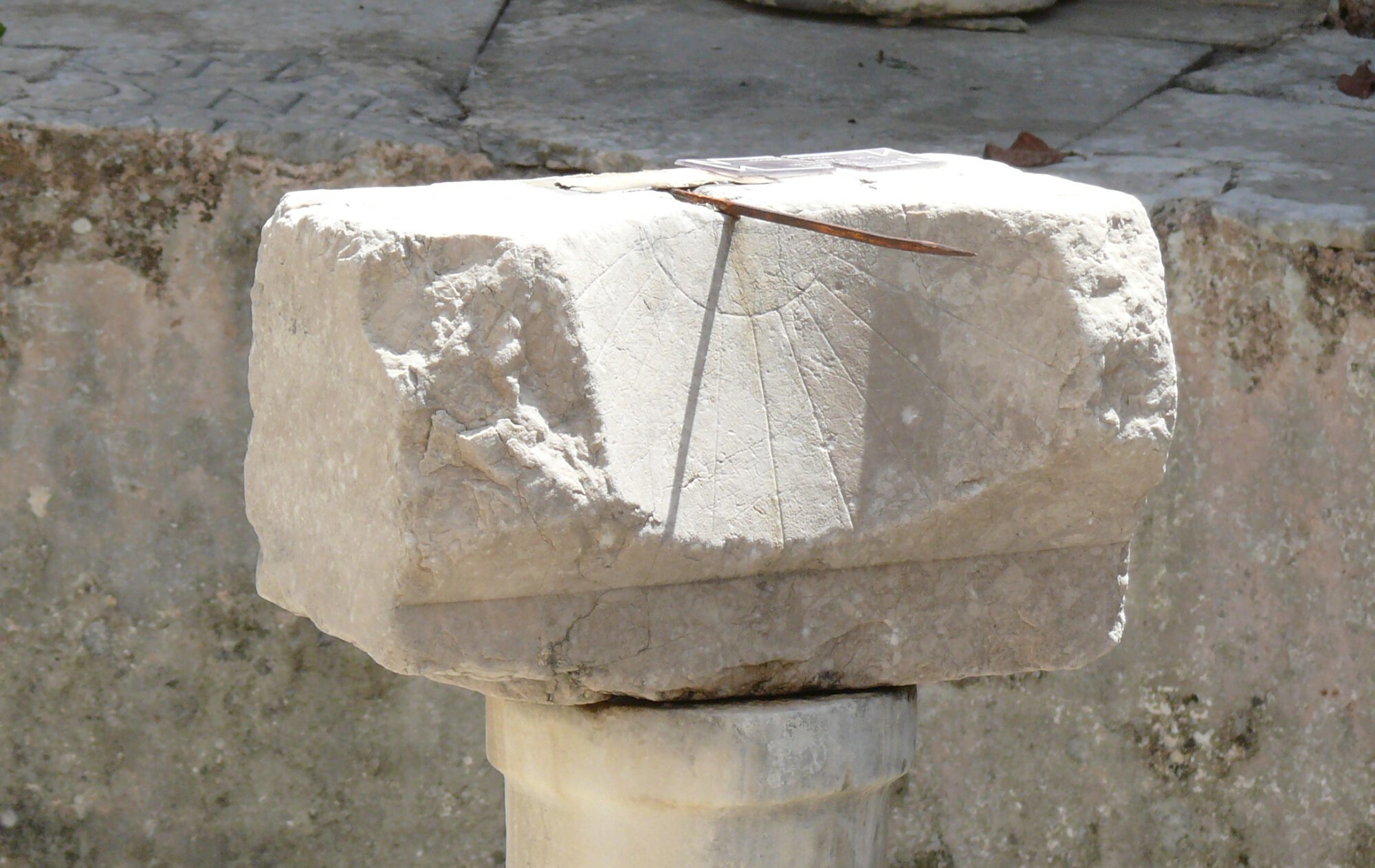In Late Antiquity, Kellia (“the Cells”) was an internationally renowned monastic community located ca. 60 km southeast of Alexandria, on the edge of the Western Desert. According to monastic tradition, it was founded by the fourth-century hermit Amun of Nitria. Following the advice of Antony the Great, “the father of Christian monasticism” (d. 356), he chose a location twelve miles from Nitria, so that hermits from this community could first eat at the ninth hour (ca. 3PM) and visit the brethren in Kellia before sunset, and vice versa. Being known as a place where hermits lived a more strict ascetic life, Kellia was famous for its holy men, who attracted admirers seeking spiritual edification or intercessory prayer. Notable pilgrims from abroad include Rufinus of Aquileia (Italy), translator of the History of the monks in Egypt, and Palladius of Galatia (in central Turkey), author of the Lausiac History, an account of Egyptian and Palestinian monasticism. Kellia is also known as one of the main locations in various Sayings of the Desert Fathers, which exists in several versions, has been translated in many languages and is still popular as spiritual literature today.
Covering an area of about 11 km (7 miles) in length, Kellia consisted of more than 1,500 buildings, organised in seven clusters ranging in number from 30 to 550 constructions, including churches and freestanding hermitages. The earliest hermitages are likely to have been very simple, consisting of at least a cell and a prayer niche, but the buildings uncovered during French and Swiss excavations include more facilities, for the hermit himself and his disciple (or disciples), and represent a later development (sixth century). They were surrounded by a rectangular enclosure wall and comprised the habitation unit of the elder in the northwest, a kitchen in the northeast and a courtyard with a well and probably a vegetable garden in the east. The elder’s rooms included an oratory with a niche in the east, a cell with a store room and a workroom, which were usually separate spaces. The disciple had his own habitational unit, usually to the south of the elder’s rooms, which also consisted of separate spaces for living, praying, working and storing food. Depending on the number of occupants, there were two or more latrines against the south wall of the enclosure. One of the larger hermitages in Qusur el-Ruba‘iyat, called Kom 88 by French archaeologists (the Arabic word “kom” refers to an archaeological mound), also included a multi-storey tower against the south wall, where the elder and his disciple could hide in case of attacks by marauders.
Kom 88 measured about 28 × 39 m. The French team partly excavated it, uncovering the habitation unit for a disciple, a silo, communal rooms and a kitchen on the north side, and part of the tower and a room with two latrines against the south wall (Fig. 1). The habitation unit of the elder and the vestibule leading to it were located to the northwest. Two rooms preceding the vestibule probably served as waiting rooms for visitors wishing to meet the elder: the walls were decorated quite elaborately, with crosses and floral designs, and many visitors left (Bohairic) Coptic graffiti with requests for prayer for deceased loved ones or for their own sake. Another Coptic inscription, in the niche in the west wall of the southern room, was painted by an occupant for a practical reason: it is a shadow table recording the average length of a shadow in feet for each Egyptian month at the ninth hour, which enabled the hermits to determine when it was mid-afternoon – time to break their fast and eat a meal, usually the only one of the day (Fig. 2).
The columns of the months and the length indications are badly aligned, as if the hermit painted them one after the other and got confused about which lines should correspond, but the table is supposed to indicate that it was time to eat in Paoni (end of May and most of June), when the shadow measured 7 feet (2,13 m), and in Koiak (end of November and most of December) when it was 15 feet (4,57 m). The other values increase and decrease according to a regular pattern (Fig. 3). It is the only known shadow table in Kellia and differs from other examples in Egyptian monasteries, which record shadow lengths for multiple hours per day (at Deir Abu Hennis, south of Antinoöpolis, and at Deir Anba Hadra near Aswan) or for the first and fifteenth days of each month (Bawit).
The shadow measured for calculating time was usually that of a standing man and the lengths recorded in the table are not exceptional, but if a man cast the shadow, another person was needed to measure it, as the standing man could not move. For a single person it would be easier if a fixed pole of similar height was positioned in such a way that even the longest shadow would remain completely visible on a flat surface, without colliding with the shadows of other constructions. As Egypt is located in the Northern Hemisphere and the sun moves from east to west, causing the shadow to turn to the northeast, the best position for a standing man or pole seems to have been in the southwest, so that the shadow would fall between the elder’s rooms and the tower.
Inspired by anecdotes in the Sayings of the Desert Fathers, I can imagine that the usual routine of the occupants of Kom 88 was as follows: while the elder followed his own regime of praying, meditating and working in his habitation unit, the disciple would prepare the meal and check the length of the shadow. At the ninth hour, he would call the elder through a conduit in the northwest corner of the room where the shadow table is, and they would eat together. When the elder was entertaining guests, they would be invited to join them, before returning home.
Renate Dekker
Further reading
- [D. Brooks Hedstrom], “Yale Monastic Archaeology Project North (YMAP-North): Kellia and Pherme”, Yale Egyptology: Current expeditions, Yale University 2023 (with further references).
- R.-G. Coquin and several others, “Neuvième campagne de fouilles aux Kellia (avril 1983): rapport préliminaire”, Annales du Service des Antiquités de l’Égypte 70 (1984-1985), 107-124 (esp. 117-124 and pls. III-V on hermitage 88).
- R. Dekker, “Amoen van Nitrië”, Lucepedia: Digitale theologische encyclopedie, Tilburg University, 2012.
- A. Delattre, “Une curieuse table d’ombres au monastère de Baouît”, Le Muséon 123 (2010), 273-286 (re-edition of the shadow table at Bawit, with a list of other shadow tables in Egypt and Nubia, including the one at Kellia, on p. 7, under e.)
- A. Guillaumont and others, “Kellia”, in: A. S. Atiya, The Coptic Encyclopedia 5, New York 1991, 1396b-1410a, available online in the Claremont Coptic Encyclopedia, Claremont Graduate University, 2009–present.



